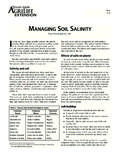Transcription of Container and Vertical Gardening Technology for …
1 Container and Vertical GardeningTechnology for the PoorJob S. Ebenezer PresidentPrepared. ByJohn OttingIn the twenty first century we are facing food security problems due to population growth and shortage of arable lands. On top of this we face food safety issues caused by pollution of the air and soil due to use of chemicals. To counter this we need to reappraise our ways to grow garden produce in both rural and urban settings. One of the main barriers to garden production in both these areas is lack of safe soil. Another challenge we face is lack of open space able to sustain a garden, especially in apartment complexes and slum areas in the urban milieu and unfavorable terrain in the rural areas.
2 Container garden along side Vertical Gardening is one solution we propose to alleviate these problems. In an effort to try and make this method of Gardening applicable to as many communities world-wide as possible and keep price to a minimum we suggest that one use recycled or reclaimed materials first. Container GardeningThe benefits of Container Gardening are manifold. Container Gardening at its simplest allows one to create a suitable space to garden in an area that would otherwise not be able to support plant growth. The largest constraint to what can be used as a Container is mainly how well whatever the material of the Container deals with the prolonged affects of the elements.
3 Keeping that in mind what follows are some of the containers known to be useable so far. Three plastic bags (mainly of the grocery bag size but this need not always be the case) one inside the other and with a piece of cardboard cut in a rectangle, to give shape to the Container , work well for one season. Feed sacks, USAID sacks or plastic weave sacks with the top end sealed, laying on their side, and with wholes cut into it to allow for plant growth also work well for one season. Or one can fill the sacks up half way with soil and roll the excess into a cuff and use them in mush the same way as the plastic bags.
4 Depending on the severity of the weather these containers might need an extra sheet underneath to catch any loose soil as the sacks degrade over the season. Reasonable any size of plastic bottle, jug or Container will work. The larger the bottle the more soil it can hold and hence, plants that have larger root systems can grow in it. These types of containers lend themselves well to being used on Vertical Gardening set ups. We have found that by turing the Container with the opening (cap on) upside down and cutting the bottom off almost any bottle can become a Gardening Container .
5 Depending on the size of the plastic Container certain vegetables will do better or worse. The smallest plastic Container we have found to be suitable is the water bottle. These work well for smaller root vegetables like carrots, thiner beets and radishes, and greens and smaller herbs. Larger than this can be used for vining or climbing vegetables like squash, cucumber, eggplant, pepper and watermelon. One should make sure that they thoroughly clean out any plastic Container before they use it for Gardening purposes. Even after cleaning certain containers still might not be advisable to use due to what it formerly held.
6 Always rely on your best judgement. The plastic wading pool is the most cost-efficient Container available. A 4 6 ft diameter pool of 12 - 15 inches deep, provide a decent size growing area and costs under $10. The topsoil, peat moss, and manure that fill the pool can be bought for under $20. Wading pools can be placed in any area that could not be used for conventional gardens, such as rooftops, black tops, along fences and railroad tracks. On contaminated surfaces, such as brown fields, vacant lots and abandoned industrial sites, wading pools can be used to isolate the growing medium.
7 Take any wading pool and carefully drill to 1 inch holes every 12 to 18 inches around the circumference of the pool 2 inches above the base of the pool. These holes will drain excess water and the space above 2 inches from the bottom of the pools will hold excess water and keep the soil moist for a longer period. Wading pools should be set on a level ground. Locate the pools in a sunny location before filling it with growing medium. Check for exposure to sun (at least 6-8 hours of sunshine is needed for most of the plants). Provide space between pools for paths for foot traffic.
8 This space is needed to have access to the surface of the pools for weeding and harvesting. Do not fill the pool with growing medium (mixture of top soil, peat moss and compost) all the way to the rim of the pool. Leave about 2 inches space from the rims so that water may not overflow and cause soil loss. You can add more growing media as the soil starts to settle and the depth decrease over the duration of growing season. As the wading pools are above the ground they tend to dry up quickly. Therefore water the wading pool gardens as often as you see the need. You can stop watering when you see the water dripping from the holes on the side of the GardeningVertical Gardening allows one to multiply the amount they can grow in a given area as the number of tiers is increased.
9 It is best used in combination with Container Gardening . The easiest method uses an existing wall or fence or any Vertical structure to which containers can be attached. Twine, wire, or nails and/or screws can be used to attach the containers to the Vertical structure, bearing in mind to amply support the Container due to the fact that over time as the plant grows so too will the weight pulling on whatever attachment used. If there is no existing Vertical structure available then one can create one using construction materials. We have found that wooden pallets work well either by leaning against a wall or supported by two or three planks or by building an "A" frame as described below.
10 The constructed Vertical structure has the added benefit of being able to be placed anywhere and be moved depending on changing weather patterns or whim. A Note on Water ConservationWater conservation is something that is always on the mind of gardeners suffering from lack of resources; be they lack of the water itself or money to procure the water. Both of these methods when used properly and with a little trial and error can conserve water. When using the Vertical Gardening method we have found that if one places a stick through all the containers in a line from the ground up, the water will trickle down through each contain via the rod or stick if one pours the water into the top most Container .




